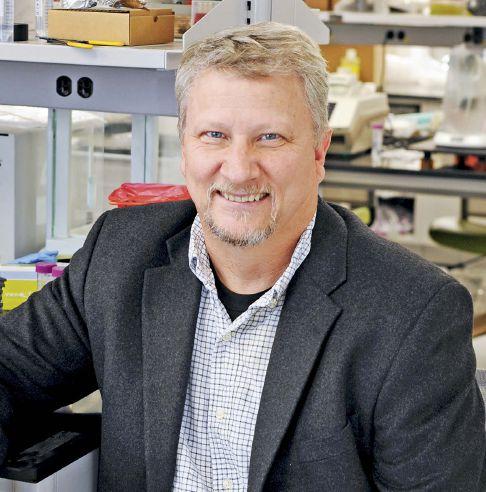
1 minute read
DiscoveryBased Learning Drives Invention, Commercialization
By Dan Ewert
The problems researchers solve are increasingly complex, often demanding multidisciplinary approaches. At North Dakota State University, a new educational model brings together faculty, graduate and undergraduate students from a variety of disciplines to combine knowledge and expertise to find solutions.
The model, called discovery-based learning, is much different than the traditional classroom. Faculty create an environment for highquality education and research, and students do the work.
Amanda Brooks, assistant professor of pharmaceutical sciences, and I are leading a faculty team whose vision is to change the mindset of education and produce “moonshot” thinkers who can change the world.
Often, moonshots are thought of in terms of new discoveries. However, the ultimate moonshot is the ability to shape our thinking to see possibilities and the courage to fail in realizing those possibilities. Innovation and creativity flourish when diverse teams merge new ideas.
We have multi-faceted goals. Part of NDSU’s mission is fulfilling our region’s workforce needs. Employers tell us they need critical thinkers who have worked on teams — professionals who are curious, connected, create value and offer thoughtful solutions.
With discovery-based learning, students and faculty mentors form teams to pursue real-world research projects. Students are immersed in a professional ecosystem where they plan projects, develop budgets, negotiate with regulatory bodies, collaborate with partners and disseminate their findings. They gain skills in teamwork, communication and project management.
Our approach is an engine for invention and commercialization. And it’s working.
During the 2015-16 academic year, our students had six invention disclosures, applied for one patent, had 13 grants funded, published
Dan Ewert PROFESSOR, DEPARTMENT OF ELECTRICAL AND COMPUTER ENGINEERING NORTH DAKOTA STATE UNIVERSITY FARGO 701.231.7619 DAN.EWERT@NDSU.EDU
nine journal papers, gave 32 conference presentations, received 11 awards and earned seven master’s degrees.
A student team created Spinthesis, a company trying to imitate spider silk to create a versatile, sustainable and biodegradable material. A goal is to use the fibers for pressure-responsive compression bandages.
Nine different projects are underway, ranging from personalized cancer therapies to developing leadless heart pacemaker technology. It’s the confluence of challenges, breakthrough technology and radical solutions.
Our long-term vision includes:
A pre-incubator facility where spin-out companies are nurtured and technologies developed.
Outreach efforts to students across North Dakota interested in starting high-tech, entrepreneurial companies.
Integration of entrepreneurship and education.
Partnerships with private companies to sponsor moonshot teams.
Recruitment of students through curriculum emphasis on translational medical products.
We envision a new commercialization facility at NDSU where student research discoveries spark entrepreneurial successes.
These projects help NDSU forge productive collaborations with business and industry, linking the university’s research mission to North Dakota’s economy.
Education should be the next moonshot effort, producing innovative, big-idea thinkers who can excel in today’s increasingly multidisciplinary research ecosystem. These high-risk, high-reward discoveries can provide dramatic socio-economic advantages for our state and its citizens.












